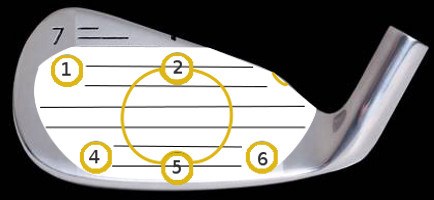
There’s usually not much question when you’ve hit a shank. The ball goes whistling off to the right (where there are hopefully no houses or innocent bystanders). There’s a reason they’re called “hosel rockets.”
But when you’re battling a case of the shanks, it’s important to know exactly where on the clubface contact is occurring when you succeed in missing the hosel. You may think you’ve caught the ball flush in the sweet spot when you’ve actually hit it on the heel – only a fraction of an inch from the hosel.
Face tape is used by clubfitters and instructors to determine exactly where club meets ball. It’s available for purchase on the Internet and through some golf shops, or you can simply use masking tape instead.
Pull off a strip of tape the length of the clubface and stick it on, heel to toe. Any shot that strikes the tape will leave a mark.
When trying to cure your shanks, practice hitting shots with tape on the club and check it after each swing. (You’ll need a new strip every few shots.) You’ll get a sense of how far from the hosel you’re making contact – on the center is ideal, obviously, but the toe is OK too. If you’re consistently hitting the heel, you’ve got a small margin for error.
A good routine is to try hitting shots off the toe, which on most clubs is a good 1 ½” from the hosel. Once you’re able to strike the toe with regularity, work back toward the club’s center.
While face tape won’t fix your swing, it will give you a visual aid that heightens your feel for the clubhead’s position in relation to the ball at impact. By attempting to hit a precise spot on the clubface/tape, your body will intuitively make the necessary adjustments.
Once on the course, check the club for grass imprints or soil left at the impact point after each shot.






